| The question was:
Can a static spark set off black powder? by
Dr. Stephen Wardlaw
The question of whether a static electric spark can set of black powder
has been debated for a while, and I recall hearing of some previous experiments
showing that it could not. Since I am involved in the design of a BP breechloader
which is to be electrically fired, I resolved to put the matter to test
in two experiments.
The Test Setup:
First, I placed a piece of white writing paper on top of a grounded
block of metal and placed a small pile of Swiss 4F powder on the paper;
I find that this powder ignites near instantaneously in my flinter. I then
placed a wire from a ceramic torch igniter 1/4" over the top of the powder.
The igniter generates a pulse of electricity of about 10,000 volts, which
is about the most static charge that can be built up on a person. I used
a combination of flash and time exposure to capture the image, where I
sparked the igniter about 10 times during the course of the exposure.
|
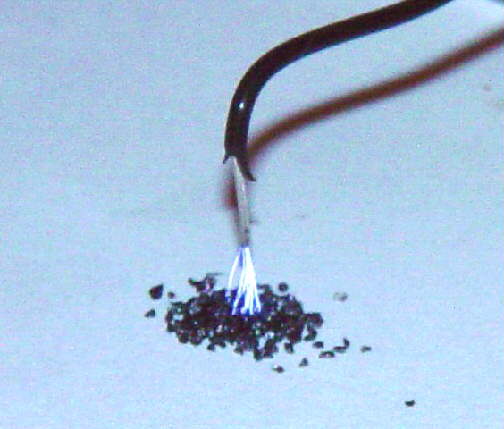 |
| As you can see, the powder did not ignite. I repeated this several
times, and the results were the same. I also tried various BP substitutes,
and they did not ignite either. |
| _________________________________________________________________________ |
|
| For the second experiment, I used an Oudin coil, which is used for
testing glass neon fixtures for leaks. It produces pulses in excess of
40,000 volts and will give you quite a burn (and shock) if you let it hit
you. |
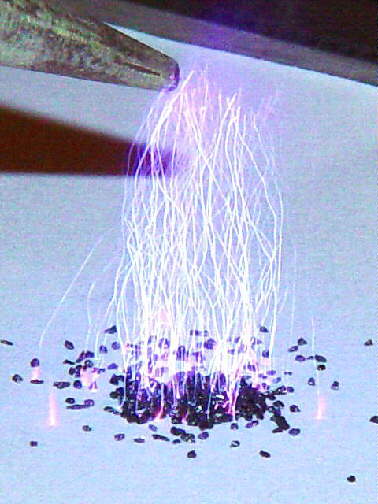 |
| This was impressive! The pile of powder was hit dozens of times, and
again, it never ignited. You can see little flashes where the sparks strike;
these are caused by vaporization of material from the surface. Although
I couldn't get a picture of it, the paper had hundreds of tiny holes punched
in it where the sparks burned through.
The next picture shows a similar test set-up, except this time the black
powder was ground into dust-like consistency. Again, no ignition, even
though the sparks striking the middle of the pile blew powder clear from
the areas where they struck.
|
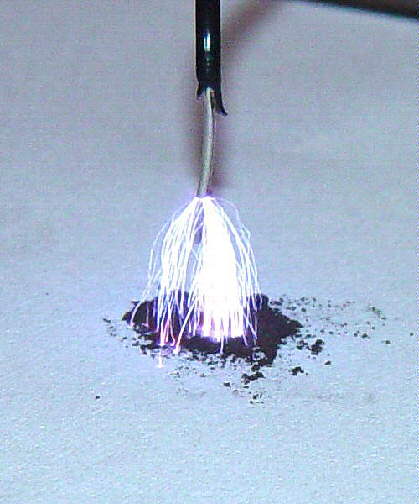 |
| Unique smokeless powder was also tried, this time with even more sparks
- again, no ignition. |
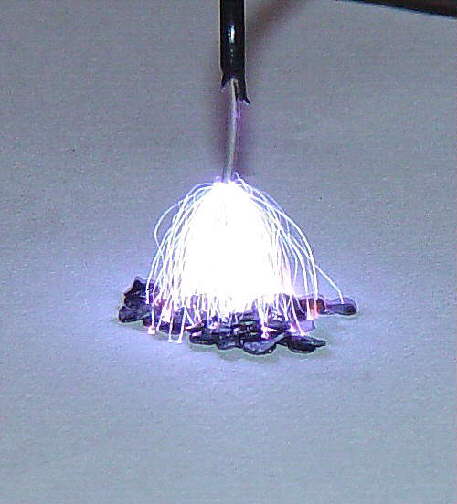 |
| For those skeptics who might not believe that the sparks actually got
near the powder granules, in this experiment, the photo shows sparks passing
around and over the individual granules as the spark travels between two
electrodes. |
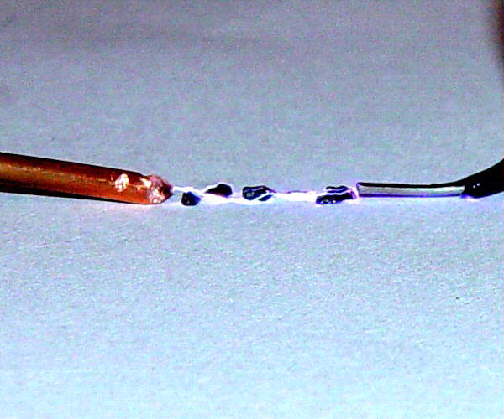 |
| _________________________________________________________________________ |
|
| So - Why wouldn't all of the sparks set off the powder?
The answer comes from the fact that black powder, and other carbon-containing
propellants, are fair conductors of electricity. When a material conducts
well, it takes a lot more current to heat it up. This is why the lamp wire
stays cool and the filament in your light bulb gets white hot. The same
current passes through both, but because the light filament has a much
higher resistance to the passage of electric current, most of the heat
ends up there rather than in the wire. In the experiment here, the air
has a very high resistance, while the powder conducts fairly well. The
passage of the spark heats the air white-hot, but the powder stays cool.
A very high-current spark (like lightning!) would, of course, heat everything
and cause ignition, but this would take much more current than could be
provided from a static-like source.
|
|